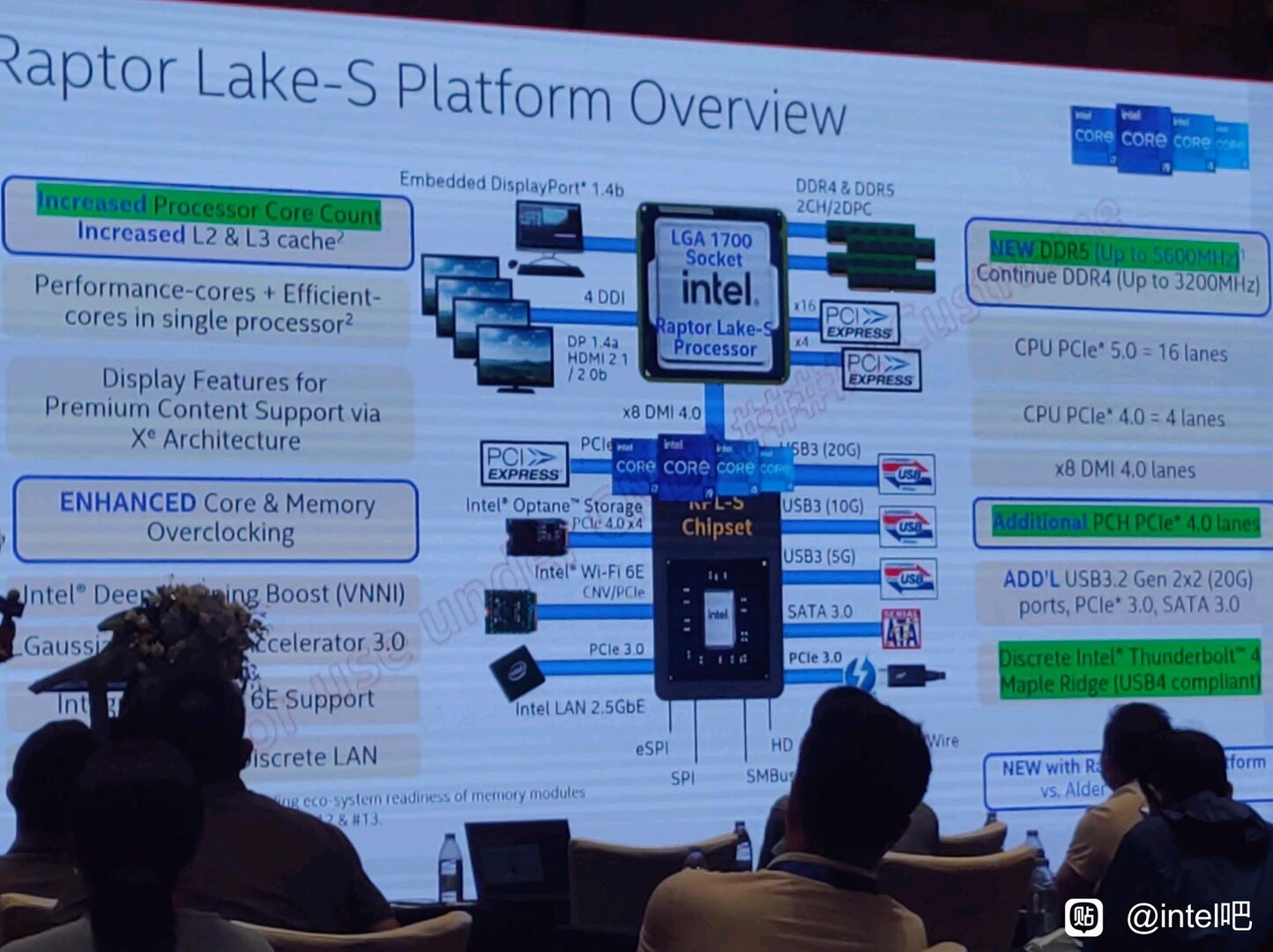In Asia, an Intel event leaked the Intel Raptor Lake-S block diagram. It reveals all the facts about the desktop platform that will inherit from Alder Lake this fall as the 13th Gen Core. Intel had already confirmed some details, others were suspected – and now confirmed. But there are also surprises.
More cores and more cache
Intel had already made it public that Raptor Lake-S will offer more cores. This is accompanied, at least in part, by the changed L2 and L3 cache configuration of the monolithic processor, because the basic structure has not changed compared to Intel Alder Lake. The doubled number of E-Cores with their L3 cache slices ensures that the total L3 volume also increases. In addition, the L2 cache capacity has been increased in the cores of both the E-Cores and P-Cores.
 Intel Raptor Lake (Image: Baidu)
Intel Raptor Lake (Image: Baidu)Raptor Lake-S still supports DDR4
The equipment of the platform, on the other hand, only takes a small step forward. The 700 chipset series around the Z790, H770, B760 & Co now officially supports DDR5-5600 along with the CPU, overclocking has been improved for both CPU and RAM. Intel also highlights the renewed support for DDR4-3200 on the slide. In the coming year, this will be a unique selling proposition, because the competitor AMD will only offer DDR5 with the AM5 platform.
Graphics cards are again supplied with 16 PCIe 5.0 lanes from the processor, and four lanes are available directly from the CPU for mass storage. This is where the block diagram delivers the first surprise: Apparently they should stay with the PCIe 4.0 standard and not be upgraded to PCIe 5.0, as rumors have always claimed. On this point, AMD would be ahead with AM5. However, it remains to be seen how mainboard manufacturers will implement the basis provided by Intel, because there are already Alder Lake mainboards that support PCIe 5.0 SSDs, but then only via lane sharing with the PCIe x16 slot – an example is the mainboard with ASRock DeskMini B660.
In the Raptor Lake-S, Intel also emphasizes additional PCIe lanes through the platform controller hub (PCH). The chipset, as it is still called colloquially, is said to offer, among other things, additional USB 3.2 ports with 20 Gbps, and Thunderbolt 4 is also included.
Core i9/i7/i5/i3-13000 from autumn
The first mainboard manufacturers are already preparing their circuit boards, the expected start date is autumn of this year. Recently, the first benchmarks with early samples had appeared, but they gave a very mixed picture. The 13th generation Intel Core will also be able to run on mainboards with the current 600 chipset and LGA 1700 – assuming a compatible BIOS.